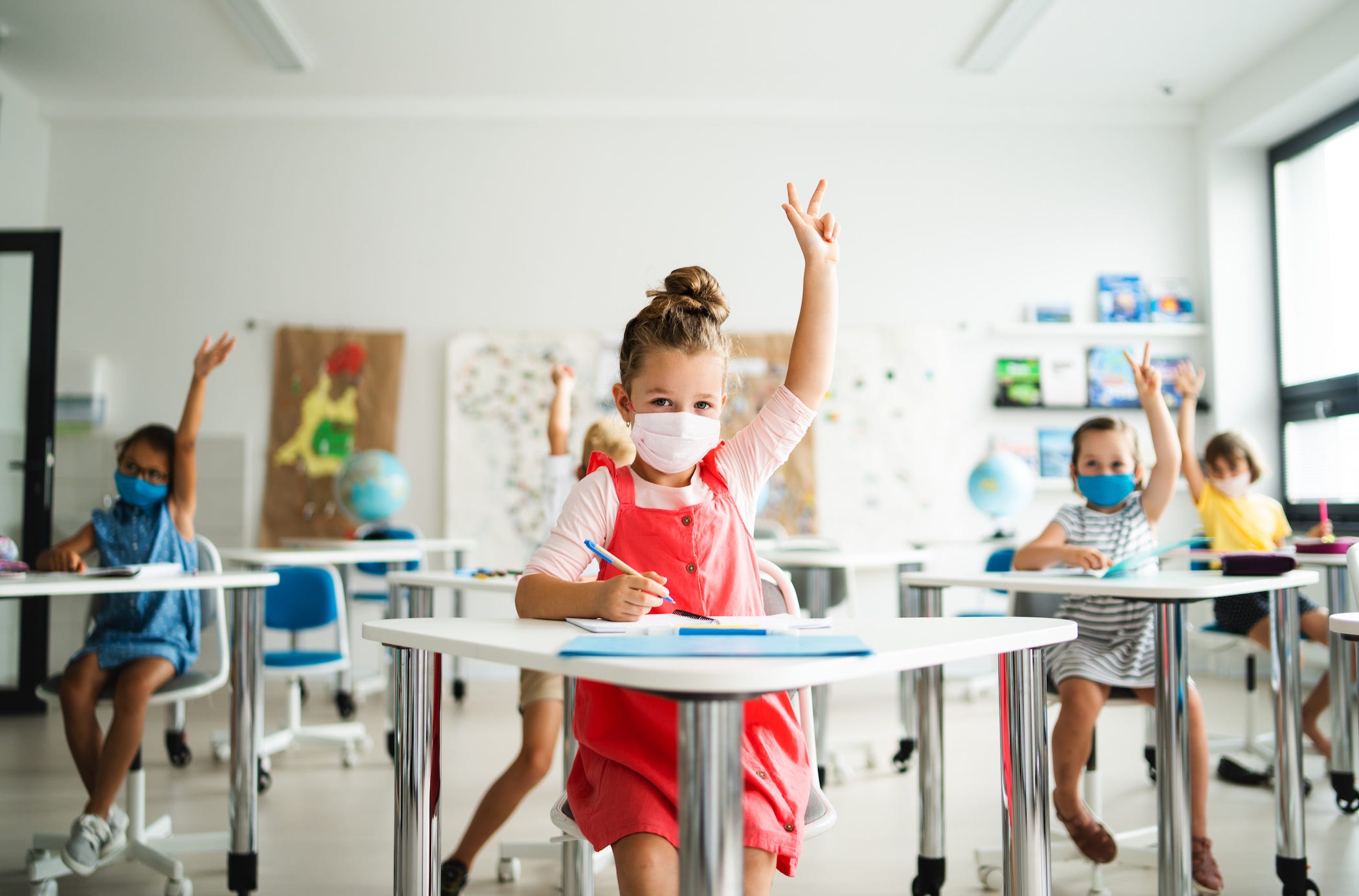
- A California teacher says their school's COVID-19 protocols are lacking as the Delta variant sweeps the US.
- They chose to remain anonymous to prevent professional repercussions; their claims have been verified by Insider.
- They say the price of being back at school feels too high, "especially when teachers already feel like we can never do enough."
- See more stories on Insider's business page.
This story was written by a high-school teacher in California. Their employment and the COVID-19 protocols they mention have been verified by Insider, but their byline is anonymous to prevent professional repercussions.
Not long ago, millions of students in California returned to in-person learning – often arriving masked and tested for COVID-19. I also returned, starting the semester in an enclosed indoor auditorium with more than 100 fully masked fellow educators for two days of professional development.
But unlike other school districts in my area, including my son's, neither the teachers in my school nor our students have been tested for COVID-19 – and not once during those two days were COVID-19 protocols mentioned.
One of my vaccinated colleagues felt symptomatic and emailed the school nurse to request a test, only to find out they weren't providing any
The school has since said it will require all students and staff to be vaccinated by mid-November, and I hope more schools and businesses follow suit. But in the meantime, I feel that as a teacher, getting COVID-19 is a matter of when, not if.
This isn't the first time we teachers have felt hung out to dry. In February of this year, the CDC said in a statement that all teachers could return to the classroom regardless of vaccination status. I was ready to go back into the classroom, but only once I was vaccinated, and teacher vaccinations were not to become available for another month.
But teachers taking caution weren't exactly treated as noble by my friends and acquaintances online. We were excoriated for being lazy, for leaving families in the lurch to struggle with childcare and homeschooling, for not putting our students' needs ahead of our own, and we were compared negatively to medical workers, police, and other first responders who had no choice but to go to work in person.
As teachers, we've heard it all before. It's a new spin on an old tune.
The expectations placed on teachers set us up to fail
When I first started teaching, I put every waking hour into the profession, devoted every evening to grading papers and planning for the next day, and spent my own money on classroom supplies. I felt good about my dedication. I felt good playing the martyr. People like Jaime Escalante of "Stand and Deliver," whose tireless efforts to teach his students nearly cost him his life, were my role models.
But once I became a parent myself, my priorities shifted. I became one of "those" teachers who came to school a few minutes before class began, and left school when the bell rang. I couldn't plan and grade all night long because I needed to take care of my son, supplement my income, and get enough sleep to start all over again the next day. I no longer felt like the martyr, and I didn't feel as good about my dedication anymore. I was putting my proverbial oxygen mask on first, and it didn't feel right.
Meanwhile, our job description as teachers has changed dramatically over the past few years. Whereas we used to be content providers, teaching content is far from our top priority. Our children today live in a more and more uncertain world, with threats large and microscopic, and are arguably less resilient to cope.
As a result, we function as makeshift social workers, psychologists, EMTs, hot-meal providers, and life coaches
We are not trained in these endeavors, and yet, as our students come to us more and more traumatized, it becomes incumbent on us to provide for their more pressing needs in order to be able to teach our content areas. And their most pressing needs are food, water, warmth, rest, and just like us - security and safety.
As teachers, we are constantly caught between providing all we can to our students and never being able to provide enough. Remote learning made that even harder: Essential services like helping our students with social, emotional, and support needs simply couldn't be replicated over Zoom.
But returning to a full capacity in-person classroom recently left me feeling ambivalent
It was such a pleasure to greet my eager students in person, yet I don't feel particularly safe - and neither do many of my students or their parents.
On the first day of school, my son's school district reported more than 3,600 positive COVID-19 cases. At my school, I have no idea how many positive cases we have because we aren't testing. And, watching the Delta variant force other businesses to shut down makes me feel that we're on a one-way trajectory to closing schools again. I hope not. I want to teach my students in person, and I want my son to get the full high-school experience.
Fortunately, as my son and I are both vaccinated, I've been told that our chances of getting really sick from COVID-19 are very small. Perhaps this is the price that society exacts on teachers so others are free to choose whether to mask and vaccinate.
I personally think this price is too high, because we're already paying the price of never - despite all we do - being able to go home at the end of the day feeling like we've done enough.
